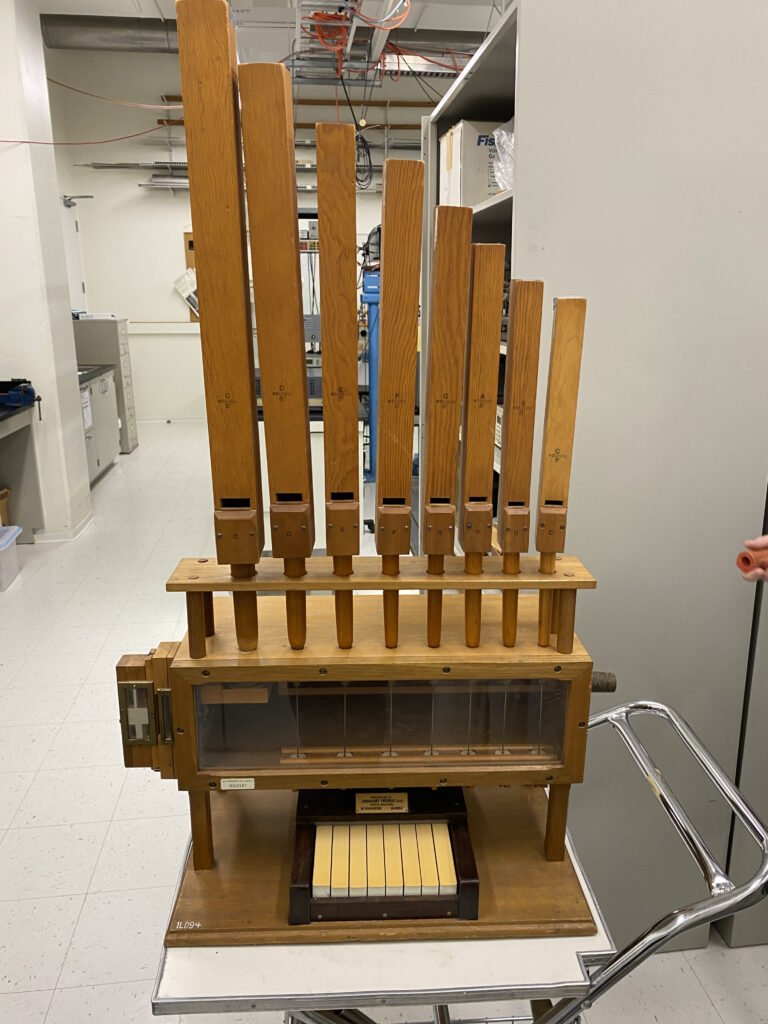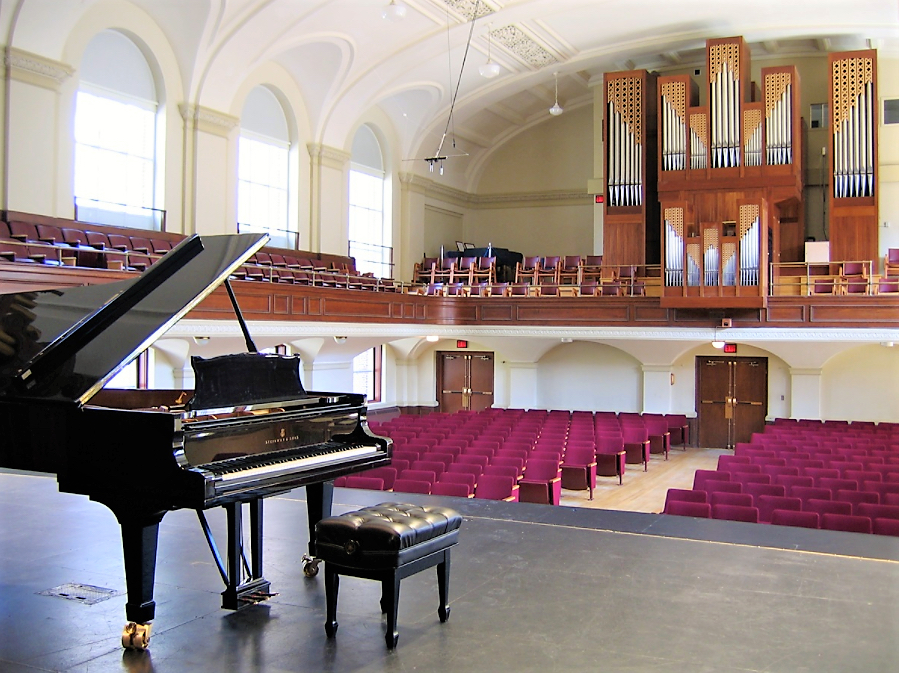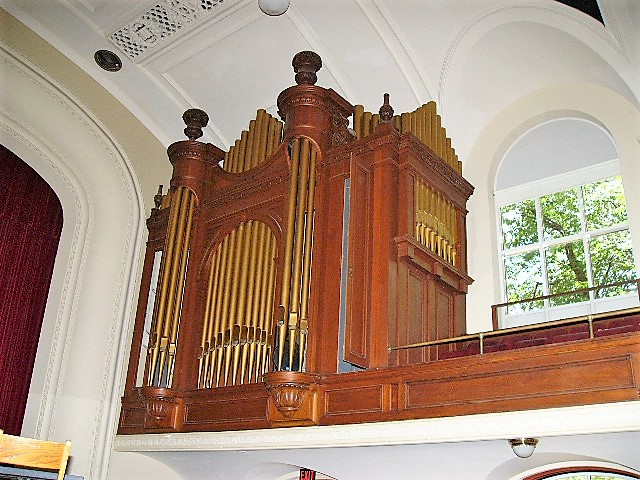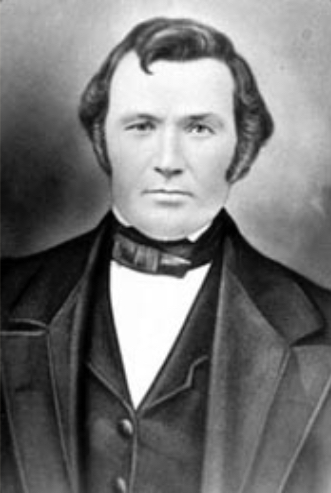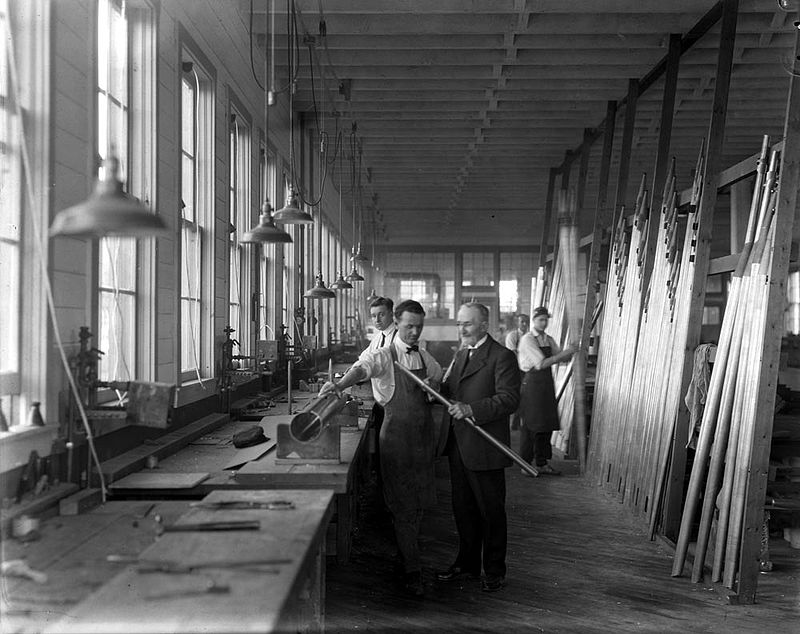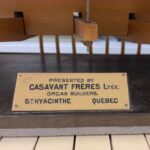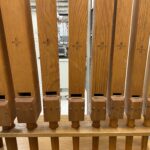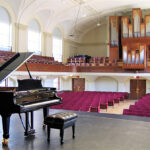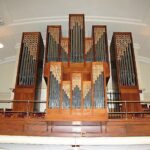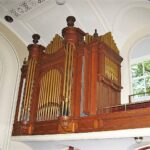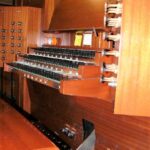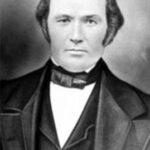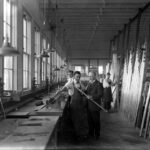Artefacts
Casavant organ demonstrator
Casavant organ demonstrator
Wooden base with “1LD94”
University label and number “THE UNIVERSITY OF ALBERTA, 0069187”
Square plate above keyboard “PRESENTED BY CASAVANT FRERES LTEE, ORGAN BUILDERS, ST HYACINTHE QUEBEC”
The upper eight pipes are labeled from left to right with ”C MELODIE 8‘—D MELODIE 8‘—E MELODIE 8‘—F MELODIE 8‘—G MELODIE 8‘—A MELODIE 8‘—B MELODIE 8‘—C MELODIE 8‘ “
Description
This is a demonstration pipe organ made by a well-known Quebec company, Casavant Frères. It was most likely obtained by the Physics department around 1925, when a Casavant organ was installed in Convocation Hall at the University of Alberta, Edmonton, Alberta, as the Memorial Pipe Organ honouring students who had lost lives during the First World War. Physics professor, Lawrence Howard Nichols, was the University Organist at the time. In 1927, the Edmonton Journal reported on Nichols’ lecture and organ playing at the University of Alberta Scout Rally. Quote from the original report “The remainder of the program was given over a splendid lecture on “Sound” by Mr. Nichols of the physics department of the university….One of the most interesting features of the lecture was his explanation of how a pipe organ is built and how it works. This he illustrated by several detached pipes as well as by a small model organ.”
Physics professor Robert William Boyle also specialised in acoustics. Both Nichols and Boyle had strong connections to McGill University in Montreal.
The pipe organ is most recognized in religious music where organs grace most of the great cathedrals and thousands of smaller Christian churches around the world.
History
Casavant Frères is well-known organ-building firm in Saint-Hyacinthe, Quebec, Canada, It was founded in St-Hyacinthe, Québec, in 1879 by the brothers Joseph-Claver (b 1855, d 1933) and Samuel-Marie (b 1859, d 1929) Casavant. Their father, Joseph Casavant (b 1807, d 1874), was originally a blacksmith who had given up his business to pursue classical studies. He happened upon a 19th century treatise on organ building, which he subsequently used to restore an instrument for l’Abbè Ducharme. While attending a college to study Latin in 1834, by completing a half-built organ to widespread satisfaction, became the first Canadian-born organ builder of note.
The brothers installed their first instrument in 1880, in the Notre-Dame-de-Lourdes chapel in Montréal. With the collaboration of the inventor Saluste Duval, they made significant progress in the use and reliability of electricity in organ building. In 1891, in Notre-Dame Cathedral in Montréal, they completed a large organ of 82 stops in which they used electro pneumatic action for the stop action and an adjustable combination system. One year later, in the basilica organ in Ottawa, the electro pneumatic system was used with success for both the key and stop action, a first in the history of organ building. The instrument in St Patrick’s Church in Montréal (1895) was completely electropneumatic.
Casavant organs were from the first very highly regarded in Canada and abroad. By 1930, when the Casavant brothers were awarded a Grand Prix at the International Exhibition in Antwerp, more than 1350 instruments had been installed. While sales to that point had been limited mainly to Canada and the US, Casavant organs were soon being built in Europe and South America, and as far away as Africa and Japan.
1950s with the arrival of the metallurgical engineer Charles Perrault, who in 1961 helped to re-establish the building of mechanical action organs. By 1996 the firm had delivered more than 3750 instruments (including some 350 with mechanical action) and continued to dominate the North American market, without neglecting its exports throughout the world.
The Casavant name literally defines the organ-building tradition in Canada, a continuing art form that pipes music in all ten provinces, all 50 states in the United States, and in many countries around the world. Ingenium – Canada’s Museums of Science and Innovation, have an electro-pneumatic Casavant pipe organ (1937) that was once in a United Church in Pictou, Nova Scotia.
Preparation:
The vacuum cleaner is plugged into the Variac which is set to 60 volts. The hose of the vacuum cleaner is fitted over the inlet pipe on one side of the organ. The output of the battery eliminator is set to 6 volts. The output is connected to the two terminals on the other side of the organ. With a setting of 60 volts on the Variac the organ should give a consistent sound for all the pipes. If the lead coverlets on the pipes are knocked out of shape there will be a change in the sound of the pipes. This organ has one set of pipes which span one octave.
Dimensions: Width: 33 cm; Height: 115 cm(base included); Length: 42 cm
Condition: Fair condition. Can still be played with air pressure.
© 2015 – 2025 Humboldt-Universität zu Berlin

